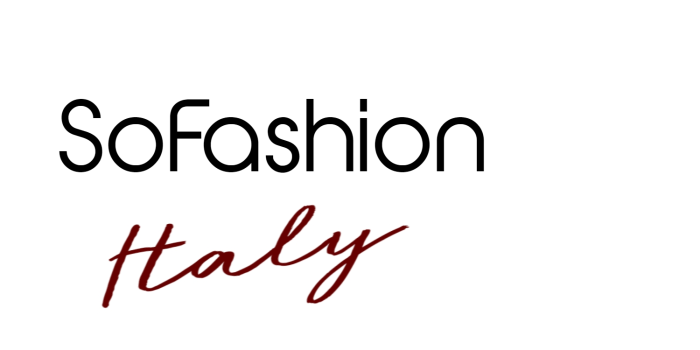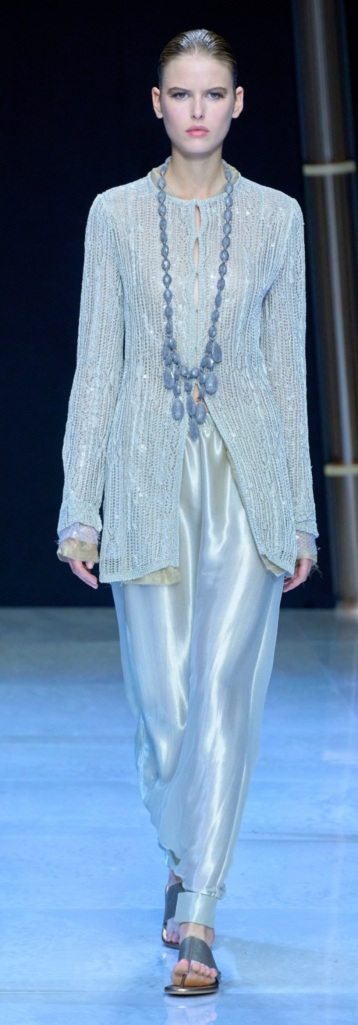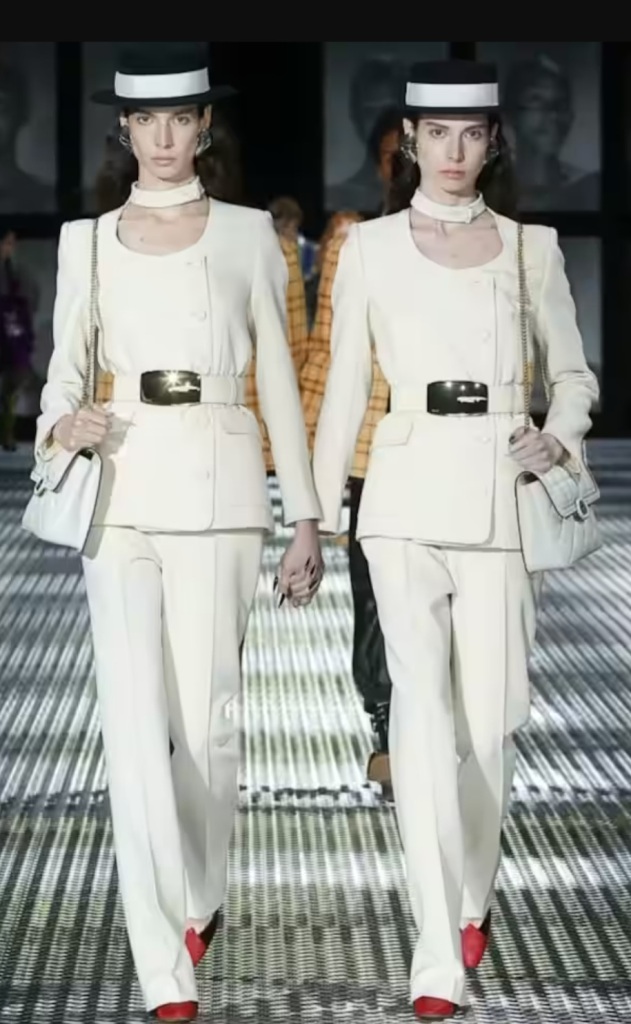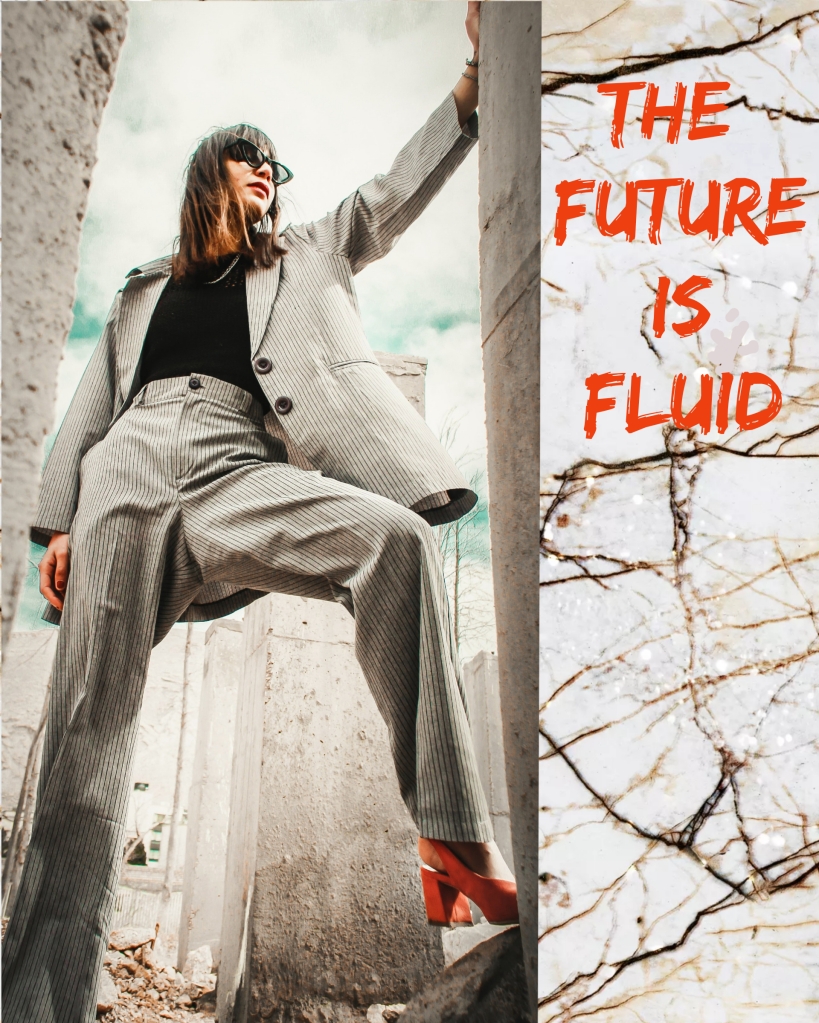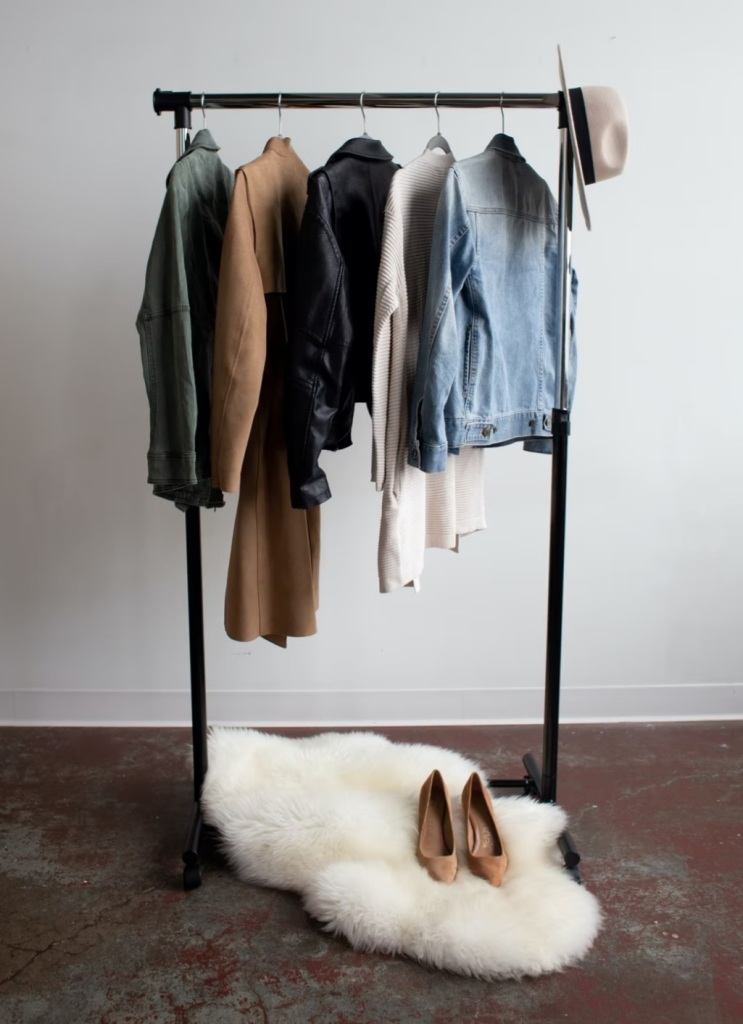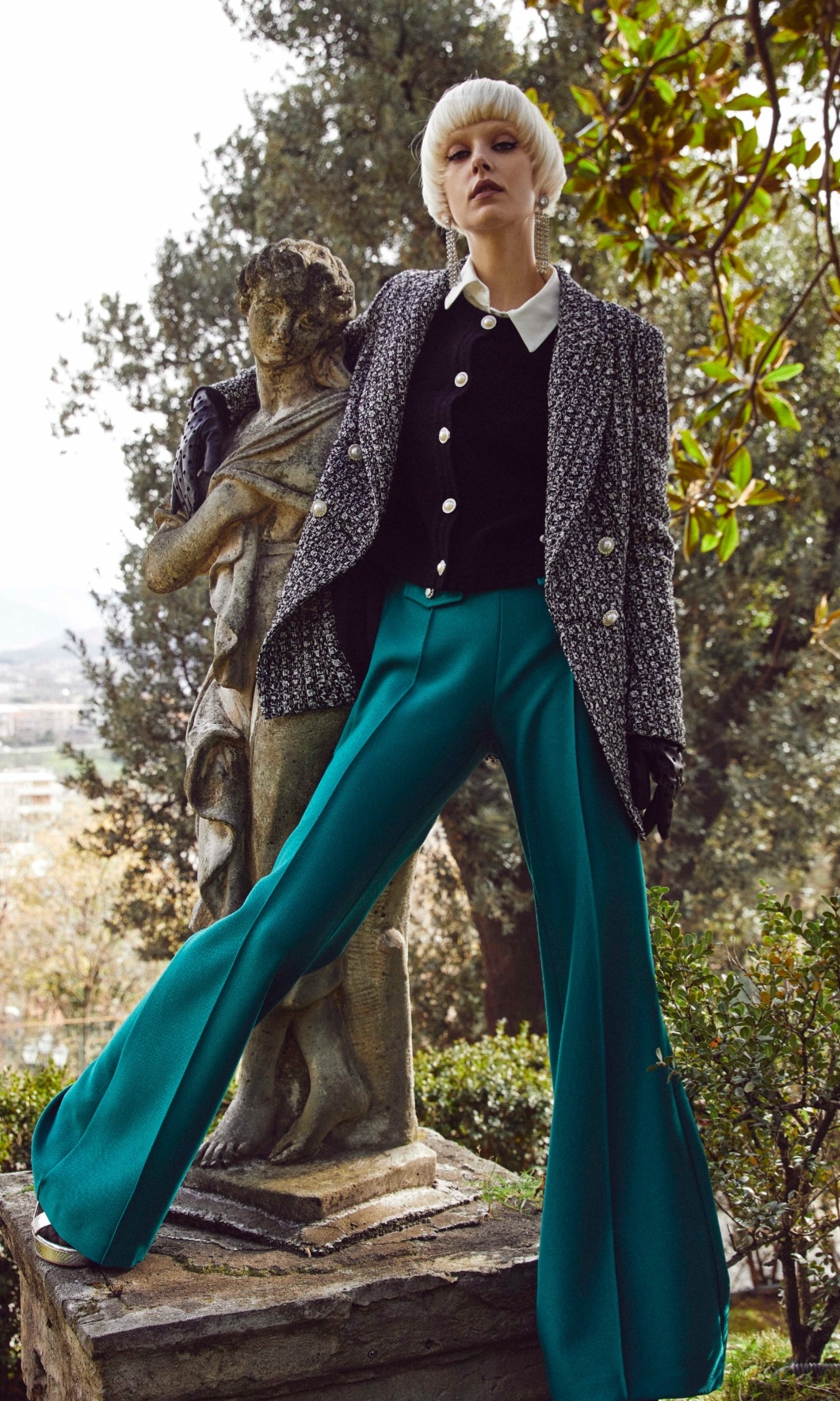
The oversize clothing is a fashion trend that probably none of us has failed to notice in the past few years. Season after season, in fact, we have seen trousers, tops, blazers and coats, becoming dramatically wider, longer, and larger. Influential designers on the Italian and international fashion scene in recent times have ever more focused on the creation of a sophisticated urban style with innovative shapes and exaggerated proportions. On their side, fashion consumers have enthusiastically embraced the trend, be it for its aesthetics, or for a new, more compelling desire for comfort. Could it be that after the pandemic our lifestyle has evolved towards softer patterns, nurturing an increased awareness of the need for a slower pace in our society? If the answer is yes, these changes are certainly mirroring a new attitude towards fashion too, as the demand for trendy loose-fitted clothing tells about the modern woman’s desire for an original contemporary style, capable of being unique, refined and relaxed at once.
But to avoid misrepresentations of this new aesthetic, let’s not confuse it with the ‘grunge’ look, which also has often been characterized by extra-large garments. That 80s’ / 90s’ trend, as well as all its more recent reminiscences, was in fact strictly limited to casual clothing and street-style, whereas the contemporary oversize trend we are here referring to encompasses sophisticated designs capable of expressing elegance and charisma. Just think about the recent popularity of the oversize suit – a glamorous and empowering modern twist to a classic fashion staple – that has become a must-have in all the latest collections by the most renowned fashion brands. Not only the styles are smart and classy: fabrics are luxurious, and the tailoring is well-structured and impeccable, carefully avoiding the risk that what is ‘oversize’ gets wrongly perceived as ‘sloppy’ instead. Not crossing the line between oversize and too-large or wrongly fitted, in fact, could be tricky, yet to an expert eye this boundary is unmistakable: if the garment fits in some key areas and there is an appropriate balance, and – mostly – if it exudes style, creativity, and elegance in the overall, then the garment is as it was intended. One could see in oversize clothing a display of the gender fluid approach to fashion, or even an androgynous inspiration. More obviously, the oversize trend tries to define a more subtle sensuality, where the feminine shape is not immediately revealed by fitted clothing, but just perceived under a wider amount of fabric, accompanied by a sense of strength, self-confidence, and glamorous uniqueness.


